‘A Shrink In The Clink’ author Tim Watson-Munro reveals chilling insight into what makes a killer
HE HAS stared evil in the face, delving into the minds of our most dangerous inmates. Now he shares what makes a killer.
CRIMINAL psychologist Tim Watson-Munro has stared evil in the face and analysed the minds of some of Australia’s most dangerous, crazy and violent crooks — many who are now either dead or in jail.
At one point, 17 of the 30 underworld criminals who met their demise at the end of a bullet during Melbourne’s so-called gangland war found their way into his offices at Victoria’s now closed Pentridge Prison or in St Kilda Road for a session on the shrink’s couch.
Infamous organised crime figures including high-profile Carlton Crew members Alphonse Gangitano, aka the “Black Prince of Lygon Street”, Jason Moran, Graham “The Munster” Kinniburgh and Dino Dibra were all on his books.
In Sydney, former Comanchero boss Mahmoud “Mick” Hawi — who was gunned down in an execution-style killing outside Rockdale’s Fitness First in February — also had his head read by Watson-Munro, who has assessed 30,000 of Australia’s most “bad, mad or dangerous inmates”.
In his new book A Shrink In The Clink, Watson-Munro takes us into a world of modern evil from serial killers, sick paedophiles, bikies, terrorists and criminal femme fatales to drug lords, dealers and corporate crooks.
ALPHONSE GANGITANO
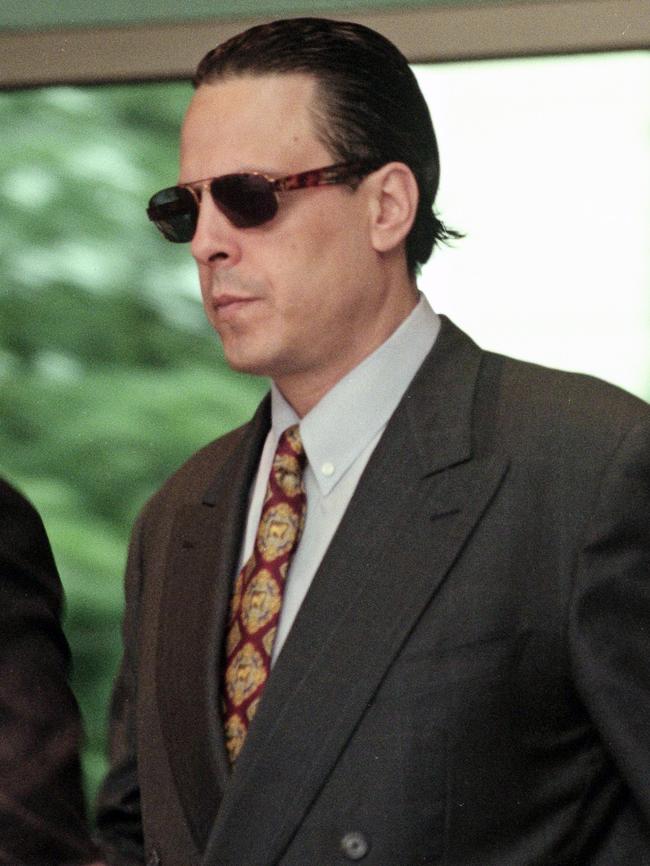
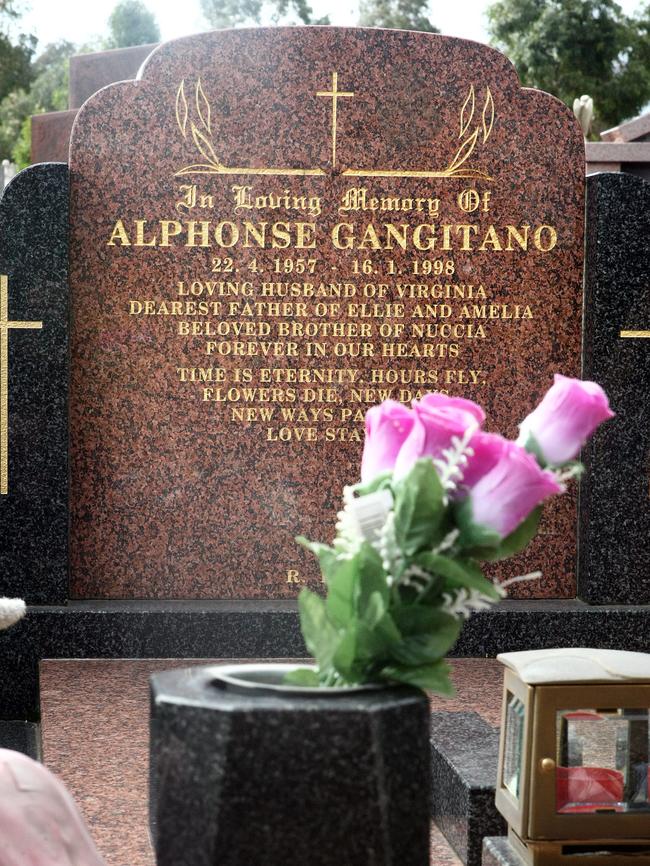
“Seventeen of the people killed in the underworld war in Melbourne were clients of mine,” Watson-Munro told news.com.au. “I knew Alphonse well.
“Alphonse was sent to me because he had been charged with the murder of Greg Workman.
“The idea was to make a bail application. I thought he had Buckley’s.”
When he met Gangitano, who was incarcerated in a notoriously tough wing of Pentridge Prison, Watson-Munro said lawyer George Defteros described his behaviour as erratic, withdrawn and agitated.
Gangitano, whose violent mood swings were the stuff of legend, was refusing to eat and would pace his cell wearing only his jocks.
“I suspected the screws would be glad of my involvement,” Watson-Munro wrote in his 2017 memoir Dancing With Demons. “While being tough men in their own right, the prison officers were no match for Gangitano and his reputation.
“Forcing Gangitano to do something he didn’t want to do could mean encountering a balaclava-wearing, baseball-carrying thug in the driveway of their home in the early hours.”
When he was charged with shooting Mr Workman at a party on February 7, 1995 — a bloody event that some credit for igniting Melbourne’s 12-year-long gangland war with the retaliation murder of Gangitano — two young women were put into witness protection.
However, prior to them testifying in court they both skipped the country and charges against Gangitano were dropped.
“I saw him a few times (in Pentridge),” Watson-Munro told news.com.au. “Mysteriously the two women elected to go overseas, the Crown case fell apart and he was released.
“After that, I thought he probably wouldn’t want to continue to see me.”

But surprisingly, the Italian mobster and father-of-two — whose “whole identity was integrally wound up in his so-called gangster lifestyle” — continued to receive psychiatric help and the two built up a certain rapport.
“He would come to my office in St Kilda Road,” Watson-Munro told news.com.au. “He would come in and when there were other crooks there, they would go straight out because he had a fearsome reputation.
“We talked about literature and the life that he would have had if he had not been a gangster.
“He was anxious, he had a wife and two children. One of the interesting moments when I was (once) walking him to the car after he left, there was a baby seat in the back … He was a family man.”
Then one day, Watson-Munro said, Gangitano cut to the chase.
“Look mate,” he said. “I want to come and see you. I can talk to you, but I’m not comfortable sitting out there in the waiting area with all those f*ck’n loons and crooks.”
After that, shrink and patient had their counselling sessions over a cup of coffee at a Lygon Street cafe, where Gangitano conducted the rest of his business, building up his revered and feared reputation as a high member of underground criminal network, the Carlton Crew.
Some years later, on January 16, 1998, the father-of-two was murdered in his own home in Templestowe, shot three times in the back of his head. His wife found his body.
“I didn’t mind him,” Watson-Munro told news.com.au. “We had a rapport. But I was fully cognisant of the dark side of Alphonse — the ‘Black Prince of Lygon Street’. When I first saw him he was facing a capital offence for 20 or 30 years.”
MAHMOUD ‘MICK’ HAWI
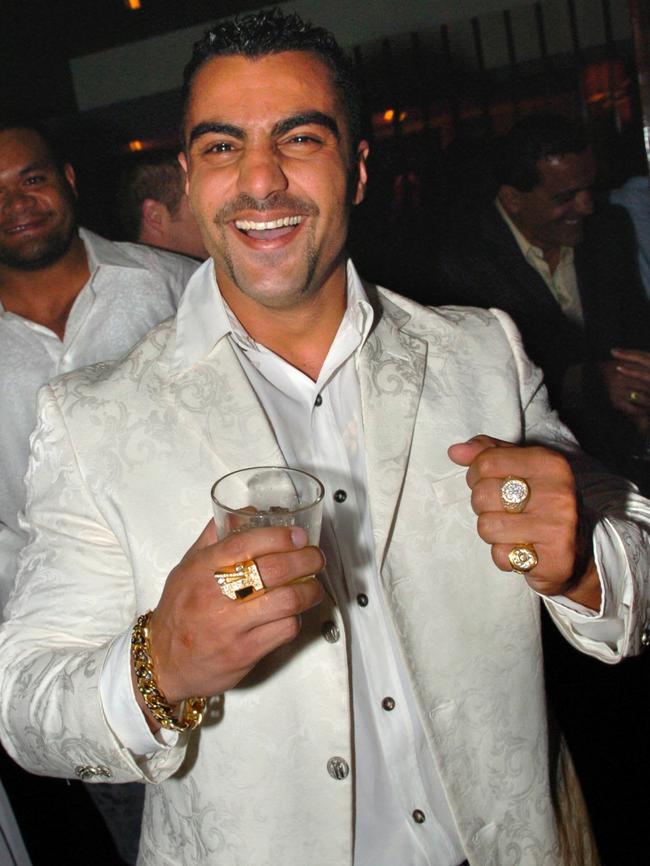

Another high profile — now deceased — figure who passed through Watson-Munro’s psychologist’s clinic was slain bikie king Mahmoud “Mick” Hawi, former president of the Comanchero gang.
At the time, Hawi was charged with murdering Anthony Zervas, 29, who was beaten with a steel bollard and stabbed with a pair of scissors during a wild, out-of-control public brawl between members of the Hells Angels and Comanchero bikie gangs at Sydney Airport in 2009.
Hawi was convicted of murder and sentenced to 28 years in jail with a non-parole period of 21 years. However, the conviction was set aside and Hawi pleaded guilty to manslaughter and in total served five years behind bars.
He was released on May 8, 2015, promising his wife he would not return to his bikie lifestyle. But on February 15 this year, the father-of-two was executed in a gym car park, across the road from a park and children’s play area.
“His murder was swift,” Watson-Munro wrote in A Shrink In The Clink. “A textbook precision hit. Relaxed, sitting in his Benz SUV following a regular training session at a Rockdale gym, 12 shots, his head blasted, he never stood a chance.
“Hawi was charismatic and driven. At 22, he had become the national president of a powerful and feared motorcycle gang. He once proudly told me, ‘I was the youngest president in the world.’ It meant a lot to him.”
JULIAN KNIGHT
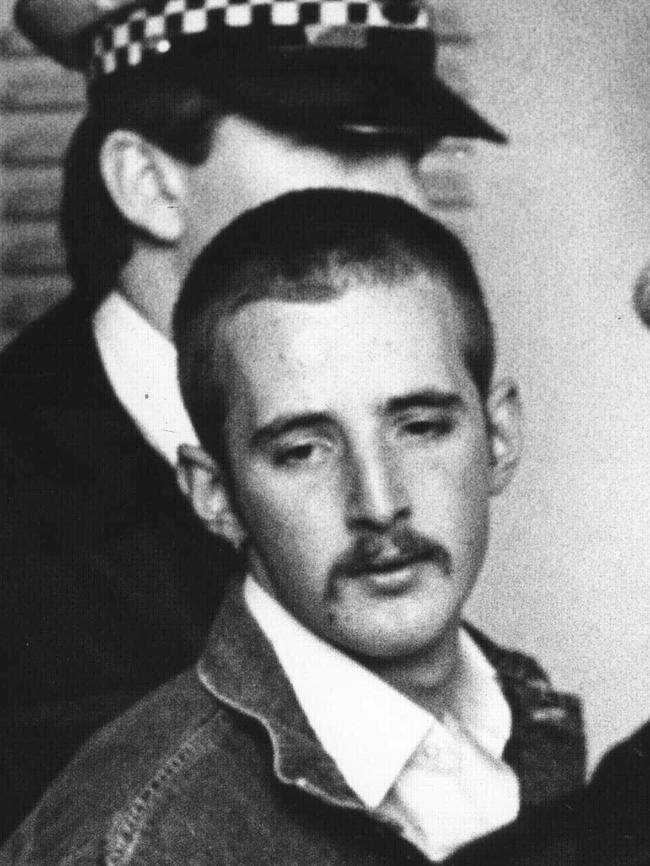
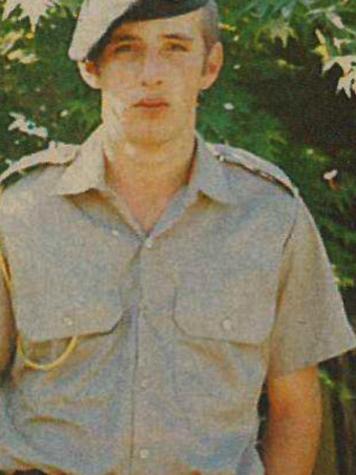
One of Watson-Munro’s first high-profile cases was that of Julian Knight, who on the evening of August 9, 1987, aged just 19, took three loaded firearms including a Ruger model semiautomatic rifle and a Mossberg pump-action shotgun and indiscriminately began to slaughter innocent bystanders in Hoddle Street, Melbourne.
Known as the Hoddle Street Massacre, the discharged army cadet shot dead seven people and wounded 19 others in one of Australia’s bloodiest mass shooting. He was sentenced to seven concurrent life sentences with a non-parole period of 27 years and is currently held at Port Phillip Prison in Victoria.
“I have assessed more than 200 murderers in my career so far and Julian Knight is a stand-alone case — not only because of the number of people he murdered but also the complexity of his thinking at the time,” Watson-Munro wrote.
Mental health problems, paranoia, psychosis and drug or alcohol addiction were often key ingredients in turning a human into a killer, according to Watson-Munro.
The offender’s upbringing was often relevant; a child raised in a home where domestic violence was commonplace — if they were neglected or abused — it made sense they would have problems down the track.
Often people with violent tendencies, coupled with psychiatric problems, such as John Edwards who shot dead his two teenage children at their home in Sydney’s West Pennant Hills before committing suicide, slipped through the cracks due to the “overloaded” mental health system.
“With the Pennant Hills murders, how he had access to guns was extraordinary,” Watson-Munro told news.com.au. “There was a history of violence. The mother, her biggest fear was to protect the children. She did not want him to know where they lived.”
COCAINE ADDICTION AND FALL FROM GRACE

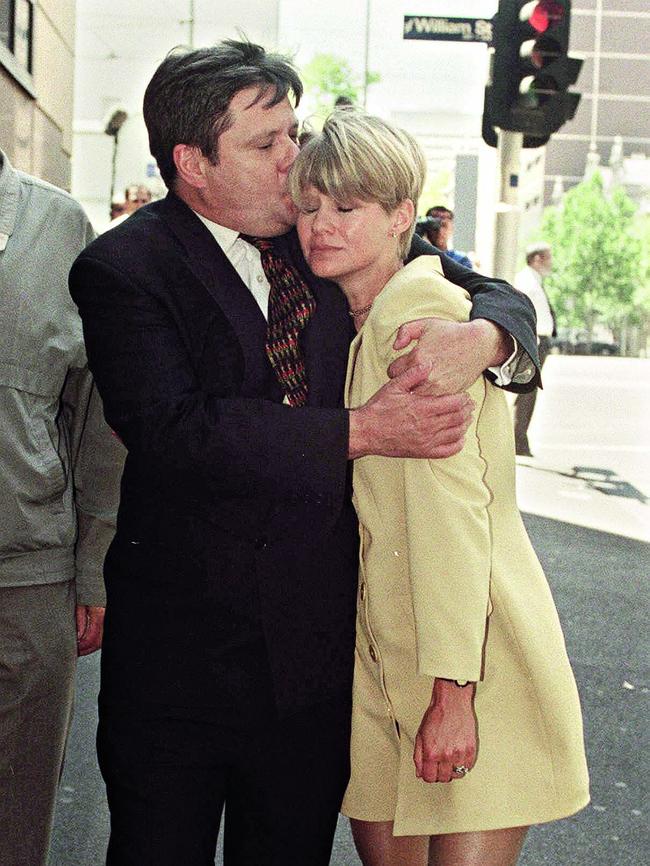
In his first book, Dancing With Demons, Watson-Munro described his very public fall from grace in September 1999 after his $2000-a-week cocaine addiction came to light when his dealer, former Melbourne lawyer Andrew Fraser, was charged with importing the drug. In 2001, Fraser was sentenced to a minimum of five years’ jail.
While Watson-Munro, a father of five adult children, stressed he had no knowledge of the alleged importation, he admitted Fraser was a “regular source of the coke” he’d been using, intensely at times.
At the time, his first wife Susan — the mother of his two eldest children — had lost her battle with cancer leaving the family “numb, grief stricken and frankly, struggling”. He was suffering from depression, anxiety and self-loathing.
After a humiliating and very public fall from grace, Watson-Munro pleaded guilty to one count of use and one of possession of cocaine and was slapped with a 12-month good behaviour bond and a $1000 fine.
However, the following year he was stripped of his professional title by the Victorian Psychologists Registration Board which for several years prevented him from running a clinical practice.
“It was the greatest challenge I ever faced. I was very well regarded,” Watson-Munro told news.com.au. “The extent of my cocaine years and my fall from grace was very difficult to negotiate. I started using coke in my 40s … I was living a double life in some ways.
“I was deregistered. I had to work on the issues. I thought, ‘You have to get through this, you have children’. By then I had a fifth child.
“Ultimately, I was able to get back into my profession and I have never looked back,” Watson-Munro said. “It’s great to have gone through that, to come through the tunnel.
“I would have preferred not to have gone through it in the first place, but it made me a more humble person. It gave me a much deeper understanding … of what other people are dealing with in terms of depression and drug use.
“We need to do more to help these people. We need to do more to stop those who import drugs and distribute them in our community.
“In the ’90s, you had to jump through hoops to get coke. We need to be educating kids in primary school about the perils of drugs.”
WHAT DRIVES PEOPLE TO KILL?
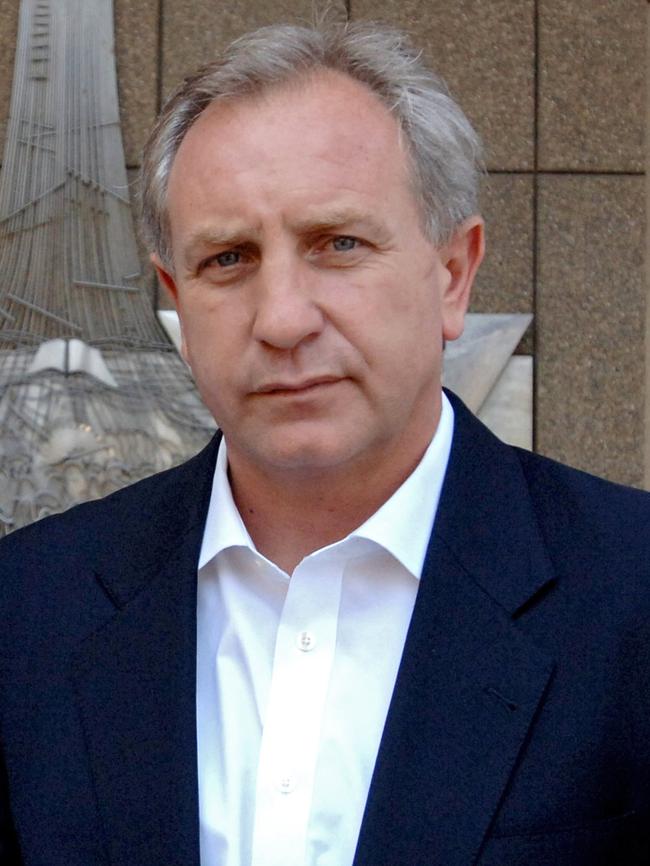

Watson-Munro, who started his career aged 25 in what was then one of the country’s toughest prisons — Parramatta Correctional Centre in Sydney — said he often wondered why people kill.
“Murder is as dated as the Old Testament. It is obliquitous and, increasingly so, random. What does it take to end the life of another human being? Money, lust, unhinged spontaneous rage, impaired judgment from drugs or alcohol? All can be relevant.”
He said the murder of Michael McGurk, who was shot dead in his Cremorne driveway in front of his young son after they returned home with fish and chips on September 3, 2009, was “particularly disturbing”.
“It does not get much worse than that,” Watson-Munro told news.com.au.
Millionaire Ron Medich was found guilty of murder for organising the hit on his former business partner, which came after deals turned sour, they became embroiled in legal battles and the 70-year-old felt Mr McGurk had made him “the laughing stock of the eastern suburbs”.
Much of Watson-Munro’s clinical work has over the years been to determine, to put it simply, whether an inmate is bad or mad — but he said the majority of violent criminals did not qualify for the insanity defence.
He said violent street crime was quite often driven by drugs — predominantly “ice” which exaggerated psychosis, paranoia and anxiety. Not a good combination for a person with a short fuse and a violent temper.
“It could start when someone looks at you the wrong way. If they are psychotic they are quite often fearful,” Watson-Munro said.
“I think the first responders — they deal with very dangerous situations now. Ambulance officers are being assaulted by people affected by drugs and alcohol. Guys turn up at hospital that are mad and dangerous.”
While he said the war on drugs had essentially been lost, Watson-Munro said more energy, money and assistance should be put into the struggling area of mental health to help prevent a damaged child from turning into an evil monster later in life.
“We are building more and more jails to house these people but we are not getting in early enough in terms of preventive measures and treatment and so on,” he said.
“I think that our mental health services are totally overloaded (and) people working in that space are overworked.”
— A Shrink in the Clink, by Tim Watson-Munro, published by Pan MacMillan Australia, will be available from July 31, $32.99
— Continue the conversation with Rebecca Franks @MrsBecFranks
• If you or someone you know needs help, please contact Lifeline on 13 11 14. For help with anxiety, depression and mental health problems, visit Beyond Blue. If you or someone you know is affected by domestic violence, call 1800 RESPECT (1800 737 732)
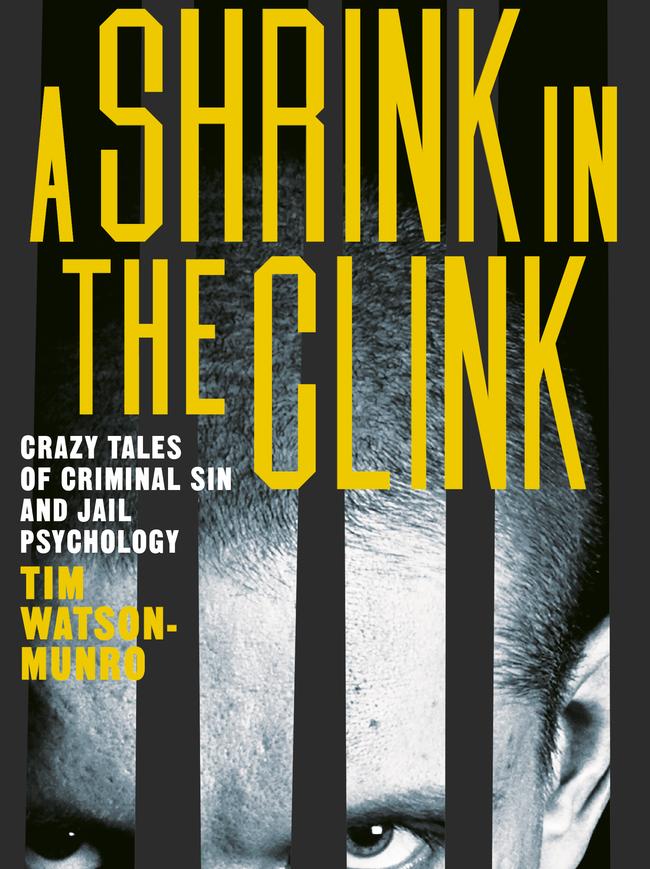
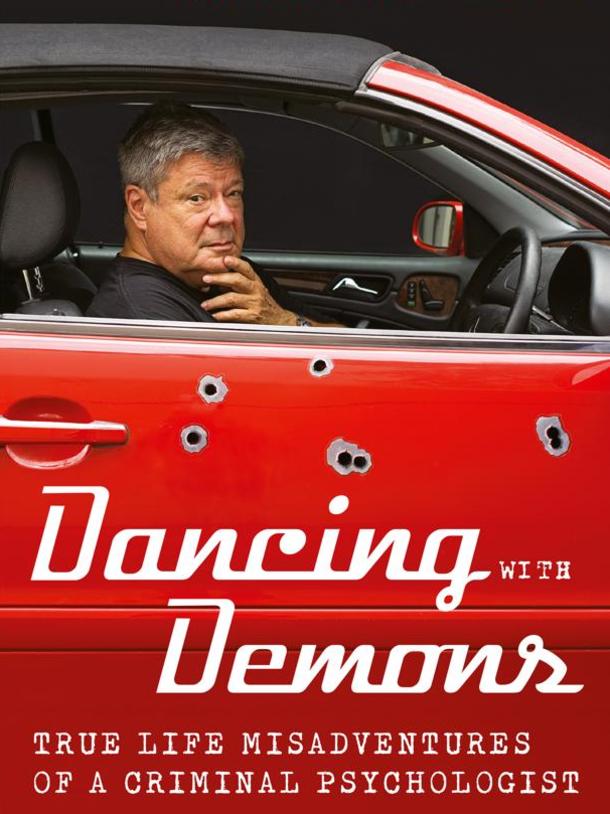
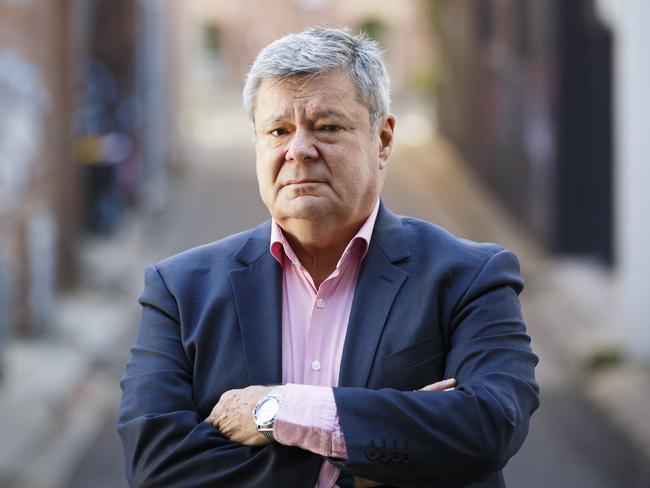
Originally published as ‘A Shrink In The Clink’ author Tim Watson-Munro reveals chilling insight into what makes a killer
